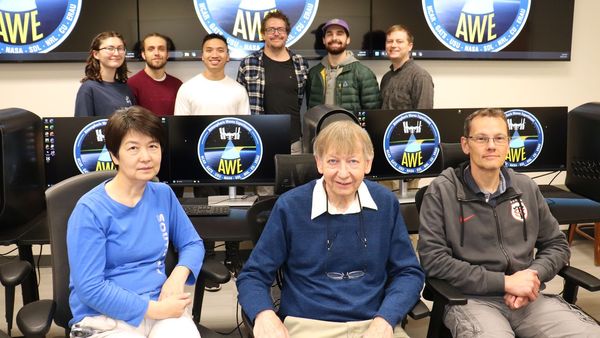New Frontier: With NASA-Funded Mission, USU Physicists Seek Novel Discoveries
Video by Taylor Emerson, Digital Journalist, University Marketing & Communications
With team members from NASA, Space Dynamics Laboratory and other institutions across the nation, Utah State University physicists look forward to the Nov. 5 launch of the Atmospheric Waves Experiment, known as AWE, to the International Space Station.
Principal investigator Mike Taylor, professor in USU’s Department of Physics , will travel to Florida’s Kennedy Space Center to witness the take-off of a SpaceX rocket that will carry the SDL-built AWE instrument to space. Weighing about 128 pounds on Earth, the high-optical throughput system will be mounted on the exterior of the orbiting spacecraft.
And that’s what Taylor and USU physics colleagues Yucheng Zhao and Pierre-Dominique Pautet eagerly await.
“Yes, the launch is exciting, but the moment we’ve been waiting for is when the instrument begins collecting data,” says Zhao, research associate professor. “We’re at the brink of gathering information about atmospheric gravity waves no one has ever known before.”
Atmospheric gravity waves, or AGWs, formed by Earth’s weather and topography, occur naturally in Earth’s atmosphere and contribute to space weather. Space weather can disrupt communication and navigation systems, and can impact spacecraft.
“Having the AWE instrument collecting data about these waves from the International Space Station affords us the opportunity to make measurements of the waves on a near-global scale,” says Taylor, who has studied the waves for more than three decades. “This is the culmination of many years of work and determination, but the excitement is just beginning.”
More information about the mission is available at AWEmission.org.
